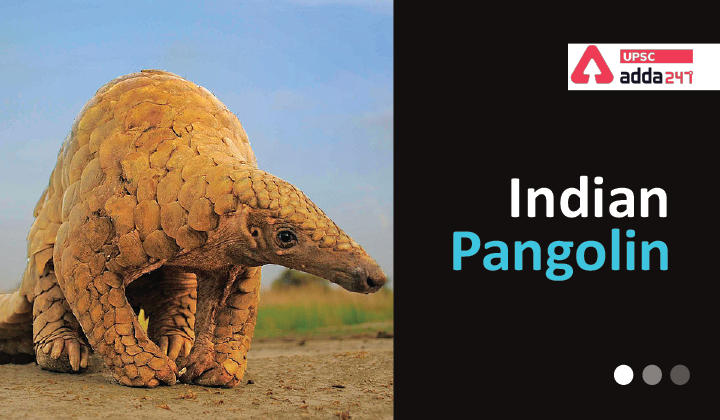Table of Contents
Indian pangolin- Relevance for UPSC Exam
- GS Paper 3: Environment- Conservation, environmental pollution and degradation.
Indian pangolin- Context
- Recently, the Odisha Forest and Environment Department have completed its first-ever radio-tagging of the Indian pangolin.
- Radio-tagging of the Indian pangolin was done in an attempt to standardize the rehabilitation protocol for the Indian pangolin in the State.
Golden Peacock Environment Management Award 2021
Indian pangolin- Radio-Tagging
- Radio-Tagging: A male Pangolin, which was rescued by the Paralakhemundi Forest Division last month, was radio-tagged and released in the Nandankanan Wildlife Sanctuary after treatment.
- Tracking: The Odisha Forest department said the animal would be tracked using a Yagi antenna and receiver.
Forest Conservation Act (FCA), 1980- Proposed Amendments to FCA
Pangolins in India: Key Points
- About: The pangolins (also called scaly anteaters) are elongated, armor-plated insectivore mammals, found across the world.
- Species: There are eight Pangolin species spread across the world. Of these eight, Indian Pangolin and Chinese Pangolins are found in India.
- Chinese Pangolin: Listed as Critically Endangered under the IUCN Red List and under Appendix 1 of the CITES (Convention on International Trade in Endangered Species).
- Indian Pangolin: Listed as Endangered under the IUCN Red List, and Appendix 1 of the CITES.
- Feeding Pattern: Pangolin feeds primarily on insects (insectivores) eating ants and termites, digging them out of mounds and logs.
- The pangolin depends on its tongue to feed itself as it lacks any teeth. Digestion in the Pangolins is aided by its strong stomach.
- Pangolin is active during the night and it rests in deep burrows during daytime
- Threats to Survival: Pangolins face survival threats due to habitat loss and rampant poaching for their skin, scales, and meat.
- Pangolins are highly trafficked mammals due to their huge demand for medicinal purposes, pangolins are smuggled through roads and rails and sent to China.
Killing of Elephants in India
Indian pangolin: Key Points
- About: Indian pangolin, also called thick-tailed pangolin is one of the eight pangolin species found across the world.
- Indian Pangolin Scientific Name: Manis crassicaudata.
- Characteristics: Indian Pangolins have overlapping scales that act as armor for its body.
- Habitat: Indian pangolin is a pangolin native to the Indian subcontinent. Indian pangolins are mainly found in rainforests and in the hills of India and parts of Sri Lanka.
- Indian Pangolin is also found in Bangladesh, Pakistan, and Nepal.
- Indian pangolin inhabits grasslands and secondary forests.
- Indian pangolin can also survive in dry and desert regions.
Common Survey to Count Elephants and Tigers
Indian pangolin- Conservation Efforts
- CITES: Indian pangolin is listed under Appendix I of the CITES since January 2017.
- IUCN Red List: Indian Pangolin is listed as ‘Endangered’ in the IUCN Red List.
- Wildlife (Protection) Act, 1972: Indian Pangolin along with Chinese Pangolin are protected under Schedule I, Part I of the Wildlife (Protection) Act, 1972.
Amur Falcon




 TSPSC Group 1 Question Paper 2024, Downl...
TSPSC Group 1 Question Paper 2024, Downl...
 TSPSC Group 1 Answer key 2024 Out, Downl...
TSPSC Group 1 Answer key 2024 Out, Downl...
 UPSC Prelims 2024 Question Paper, Downlo...
UPSC Prelims 2024 Question Paper, Downlo...
